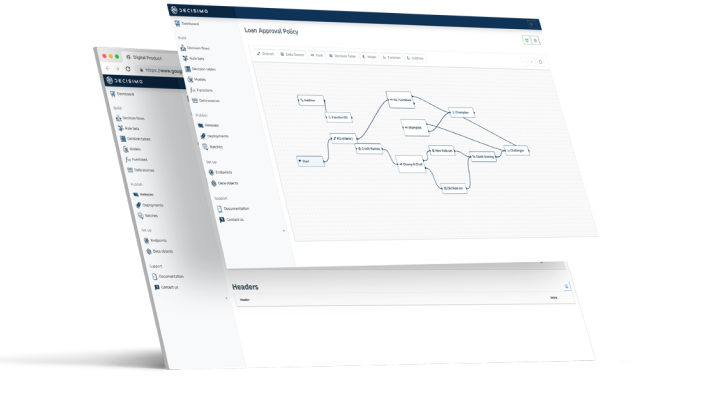Evaluating the ROI of Decision Engines in Financial Companies - Decisimo
Published on: 2024-08-10 18:36:09
Introduction
A South East Asia Use Case for Automating Loan Underwriting
Automating loan underwriting with decision engines like Decisimo offers an efficient way for financial companies to cut costs, reduce errors, and speed up decision-making. Here's how to evaluate the ROI for making such a transition, using a real-world South East Asia use case as an example.
Cost-Benefit Analysis
Current Manual Underwriting System
- Total Monthly Cost: 32 Underwriters + 3 Team Leaders = $14,600
Proposed Automated System: Decisimo
- Total Monthly Cost: Decisimo + 3 Retained Underwriters + 1 Team Leader = $3,367
- Monthly Savings: $14,600 (Current) - $3,367 (Proposed) = $11,233
- Annual Savings: $11,233 x 12 = $134,796
Cost Breakdown for Decisimo
- Decision Engine Cost per Month: $1,500
- Retained Human Underwriters: $1,200
- Team Leader: $600
- Amortized One-Time Integration Cost: $67
Key Factors for ROI Calculation
Direct Cost Savings
- Personnel Costs: Transitioning reduces personnel costs by $11,200 per month.
- Decisimo Costs: $1,500 per month for automating 500 loans/day.
Error Reduction
Human errors can lead to wrong underwriting decisions, impacting loan portfolio quality. Decision engines like Decisimo have lower error rates.
Speed and Opportunity Cost
- Faster Approval: Automated systems expedite loan approval.
- Customer Experience: Quicker approvals enhance customer experience.
Calculating ROI
ROI can be calculated using the formula:
ROI = (Net Profit / Total Investment) x 100
Accounting for Internal Integration Costs
While Decisimo itself does not charge any integration fees, financial institutions should account for their internal costs to integrate the decision engine. In our example, we estimate two man-days for IT development at a rate of $400 per day, resulting in a one-time integration cost of $800. This cost is then amortized over 12 months, adding an additional $67 to the monthly operating costs.
Risks and Mitigations
- Implementation Time: Delays in implementation affect ROI.
- Employee Retraining: Costs may arise for retraining staff.
- Compliance and Regulation: Ensure compliance to avoid legal risks.
Conclusion
Switching to a decision engine like Decisimo offers substantial direct and opportunity cost savings. The South East Asia use case demonstrates potential cost reductions of about 77%, yielding a compelling ROI. Given that Decisimo charges no integration fees, the financial incentive for making the transition is even more attractive. Financial institutions should seriously consider these metrics when evaluating the move to an automated decision engine.
Conclusion
To sum up, the choice between batch-processing and real-time decision engines hinges on your specific data needs. Batch-processing engines are well-suited for large-scale, non-time-sensitive tasks, while real-time engines excel in immediate, transaction-specific decision-making. Whether you need to handle large data volumes in a scheduled manner or require on-the-fly decisions, understanding these core differences can guide you to the most effective solution for your business.


